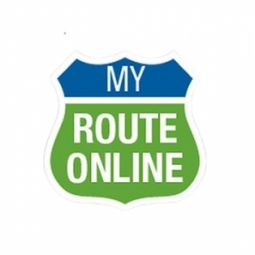Applicable Industries
- Security & Public Safety
- Transportation
Applicable Functions
- Logistics & Transportation
Use Cases
- Last Mile Delivery
- Vehicle Telematics
About The Customer
The customer in this case study is the Community Policing Department of Port Alberni, a municipal government position in partnership with the Royal Canadian Mounted Police of the City of Port Alberni, Vancouver Island, B.C. The department is responsible for managing volunteering in an efficient manner. Every month, volunteers deliver awareness letters to the residences of those victimized by crime. The department plans routes once a month, with approximately 20 stops. Stops are often added based on crime stats. The department was in search of an easy yet efficient delivery app or software that would optimize volunteer time and ensure quick delivery of these letters.
The Challenge
The Community Policing Department of Port Alberni, in partnership with the Royal Canadian Mounted Police, was faced with the challenge of efficiently managing volunteer resources. The department's volunteers were tasked with delivering awareness letters to crime victims' residences every month. The challenge was to optimize volunteer time and ensure quick delivery of these letters. The department needed an easy-to-use delivery app or software that would automatically optimize routes, reducing the need for manual planning and scheduling. The app also needed to be compatible with the department’s iPad devices. The department plans routes once a month, with approximately 20 stops. Stops are often added based on crime stats, requiring a solution that could automatically update stops and adapt the route to ensure the volunteer drivers are still on the shortest, quickest, and most efficient path.
The Solution
The department chose MyRouteOnline as it met all their criteria. The app was easy to upload addresses and manage an account. It was also simple and helpful for volunteers to use during delivery. The web platform was easy to use and saved the department a significant amount of time. The app was a perfect fit for the department's programming. MyRouteOnline allowed the department to export addresses to multiple drivers/volunteers and assign territories to volunteers to balance the workload. The app optimized routes for the most efficient delivery, taking into account stop addresses, real-time traffic and road closures, delivery schedules, and other variables to plan the quickest possible routes. The app was easy to integrate with the department’s iPads and devices, making its implementation and adoption effortless and easy. MyRouteOnline also offered special rates and benefits to the Community Policing Department, a not-for-profit volunteer community safety group.
Operational Impact
Quantitative Benefit

Case Study missing?
Start adding your own!
Register with your work email and create a new case study profile for your business.
Related Case Studies.

Case Study
Airport SCADA Systems Improve Service Levels
Modern airports are one of the busiest environments on Earth and rely on process automation equipment to ensure service operators achieve their KPIs. Increasingly airport SCADA systems are being used to control all aspects of the operation and associated facilities. This is because unplanned system downtime can cost dearly, both in terms of reduced revenues and the associated loss of customer satisfaction due to inevitable travel inconvenience and disruption.

Case Study
IoT-based Fleet Intelligence Innovation
Speed to market is precious for DRVR, a rapidly growing start-up company. With a business model dependent on reliable mobile data, managers were spending their lives trying to negotiate data roaming deals with mobile network operators in different countries. And, even then, service quality was a constant concern.

Case Study
Digitize Railway with Deutsche Bahn
To reduce maintenance costs and delay-causing failures for Deutsche Bahn. They need manual measurements by a position measurement system based on custom-made MEMS sensor clusters, which allow autonomous and continuous monitoring with wireless data transmission and long battery. They were looking for data pre-processing solution in the sensor and machine learning algorithms in the cloud so as to detect critical wear.

Case Study
Cold Chain Transportation and Refrigerated Fleet Management System
1) Create a digital connected transportation solution to retrofit cold chain trailers with real-time tracking and controls. 2) Prevent multi-million dollar losses due to theft or spoilage. 3) Deliver a digital chain-of-custody solution for door to door load monitoring and security. 4) Provide a trusted multi-fleet solution in a single application with granular data and access controls.

Case Study
Vehicle Fleet Analytics
Organizations frequently implement a maintenance strategy for their fleets of vehicles using a combination of time and usage based maintenance schedules. While effective as a whole, time and usage based schedules do not take into account driving patterns, environmental factors, and sensors currently deployed within the vehicle measuring crank voltage, ignition voltage, and acceleration, all of which have a significant influence on the overall health of the vehicle.In a typical fleet, a large percentage of road calls are related to electrical failure, with battery failure being a common cause. Battery failures result in unmet service agreement levels and costly re-adjustment of scheduled to provide replacement vehicles. To reduce the impact of unplanned maintenance, the transportation logistics company was interested in a trial of C3 Vehicle Fleet Analytics.

Case Study
Smart City Public Safety
Amyx+ worked with a local government authority to develop an Internet of Things-enabled public safety strategy. In the current state, vigilance meant manually scanning through potentially hundreds of analog surveillance videos feeds. Manual, costly and ineffective, the local agency desired to transition from analog to digital CCTV, apply computer vision and other technologies to automatically detect potential crime in progress, expedite and streamline emergency calls and integrate with personal wearables to ensure the safety of their citizens.







